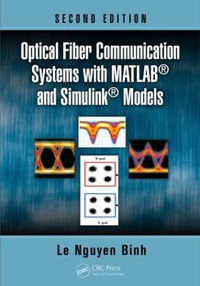| Introduction | p. 1 |
| Conclusion | p. 5 |
| Internet Topology Change | p. 7 |
| Overview | p. 7 |
| Current Status | p. 7 |
| Traffic and Traffic Growth | p. 10 |
| Conclusion | p. 14 |
| The Carrier Business Model | p. 15 |
| Overview | p. 15 |
| Service Level Agreements (SLAs) | p. 17 |
| The VoIP Business Model | p. 18 |
| Internal Corporate Accounting | p. 19 |
| Conclusion | p. 20 |
| Advanced Routers in Central Office Applications | p. 21 |
| Overview | p. 21 |
| Central Office (CO) Colocation | p. 21 |
| Conclusion | p. 25 |
| Function Split | p. 27 |
| Overview | p. 27 |
| Traditional System Partitioning and Function Split | p. 30 |
| Functions within the Port Card | p. 31 |
| Functions within the Processor Card | p. 31 |
| Functions within the Switch Card | p. 32 |
| Functions within the OAM&P Card | p. 32 |
| Conclusion | p. 33 |
| High Availability | p. 35 |
| Overview | p. 35 |
| Definition | p. 35 |
| Implications | p. 35 |
| Network View of Redundancy and Failsafe Operation | p. 39 |
| Example | p. 41 |
| Design Life Time and Single Point of Failure Impact | p. 44 |
| Definition of Availability | p. 44 |
| 1+1 Redundancy | p. 45 |
| 1:1 Redundancy | p. 46 |
| 2 out of 3 (or N out of N+1) Redundancy | p. 47 |
| Redundant Switch Fabric Cards | p. 48 |
| Redundant Line Cards | p. 50 |
| Redundant Links | p. 52 |
| Redundant Power Supplies | p. 55 |
| Software Robustness | p. 56 |
| OAM&P Control over Redundant Subsystems | p. 58 |
| Timed Switchover | p. 58 |
| Switchover on Demand | p. 59 |
| Reducing Human Error Probability | p. 59 |
| Conclusion | p. 60 |
| The Chassis | p. 61 |
| Overview | p. 61 |
| Single-board versus Modular Designs | p. 62 |
| Modular Designs | p. 62 |
| Power Supply Considerations | p. 68 |
| Single-board Designs | p. 70 |
| Midplane Designs | p. 71 |
| The Card Cage | p. 73 |
| Power Supply Unit | p. 75 |
| Fan Trays | p. 75 |
| Backplane Designs | p. 76 |
| The Card Cage | p. 76 |
| Power Supply Unit | p. 78 |
| Fan Trays | p. 78 |
| Conclusion | p. 79 |
| Line Cards | p. 81 |
| Overview | p. 81 |
| Line Card Functions in IPv6 Routers | p. 81 |
| Definitions | p. 87 |
| Definition of a Line Card | p. 87 |
| Definition of a Port Card | p. 87 |
| Definition of a Processor Card | p. 87 |
| Functional Requirements | p. 88 |
| Data Loss and Higher Layers | p. 103 |
| Distribution of Traffic | p. 108 |
| Traffic Manager Functions versus Queue Manager Functions | p. 110 |
| Ingress-side Traffic Management | p. 111 |
| Further Impact of Advanced Router Architectures | p. 117 |
| Line Cards as Server NICs | p. 117 |
| Scalability | p. 117 |
| Differentiation of Functions | p. 118 |
| Line Card Implementation in Single-board Designs | p. 119 |
| Line Card Implementation in Midplane Designs | p. 119 |
| Line Card Implementation in Backplane Designs | p. 120 |
| Line Card Messaging and Communications | p. 122 |
| Internal Line Card to Line Card Communication | p. 123 |
| Internal Line Card to Switch Fabric Communication | p. 124 |
| Line Card to Switch Fabric Queue Manager Communication | p. 124 |
| Line Card to External Resources Communication | p. 125 |
| Interior and Exterior Border Gateway Protocols | p. 125 |
| Line Card Functions for PSTN Internetworking | p. 126 |
| Port Card Functions | p. 126 |
| Definitions | p. 127 |
| Network Processor and Traffic Manager Software Implications | p. 127 |
| Local Control Processors for Line or Processor Cards | p. 128 |
| Compute Efficiency | p. 129 |
| Conclusion | p. 130 |
| Switch Fabric Cards | p. 133 |
| Overview | p. 133 |
| Functional Requirements for an Advanced Router's Core | p. 133 |
| History of Router-internal Interconnects | p. 134 |
| Basics | p. 136 |
| Externally Controlled Switches | p. 140 |
| The Scheduling Challenge | p. 141 |
| Crosspoint Switches and Crossbar Switches | p. 141 |
| Self-routing Switches | p. 141 |
| LCI | p. 142 |
| Shared Memory Switches | p. 143 |
| Non-buffered, Non-queued Switch Fabrics | p. 143 |
| Buffered and Queued Switch Fabrics | p. 143 |
| Combined Virtually Output Queued (CVOQ) Switch Fabrics | p. 144 |
| Cleaner and Easier Logical and Functional Partitioning | p. 144 |
| Easier Routing of Traces on the Backplane | p. 145 |
| Higher Throughput of the Switch Fabric | p. 145 |
| Less Incremental Cost for Upgrades | p. 146 |
| Metrics of Switch Fabrics | p. 146 |
| Net Bit Rate or Link Rate Utilization (Minimum, Maximum, Average) | p. 147 |
| Throughput (Total and on a per-Link Basis) | p. 148 |
| System Availability (Minimum) | p. 148 |
| System Uptime (Minimum) | p. 150 |
| Reliability (Error Rate) | p. 151 |
| Logical Connection Setup Time (Minimum, Maximum, Average) | p. 151 |
| Logical Connection Teardown Time (Minimum, Maximum, Average) | p. 151 |
| Delay and Latency | p. 152 |
| Round-Trip Delay (Minimum, Maximum, Average) | p. 153 |
| Cell Delay Variation (CDV) (Minimum, Maximum, Average) | p. 153 |
| Scalability | p. 154 |
| Field Upgradability | p. 156 |
| Resource Utilization on the Network Processor | p. 156 |
| Cost Structure | p. 157 |
| Feasibility | p. 157 |
| Performance Extension | p. 158 |
| Blocking Multi-stage Switches | p. 158 |
| Non-blocking Multi-stage Switches | p. 159 |
| Bit Slicing | p. 159 |
| Cell Slicing | p. 159 |
| Load Sharing across N Planes | p. 160 |
| Master/Slave or "Performance Extension Architectures" | p. 161 |
| Alternative Solutions | p. 162 |
| "Pay-as-you-grow Solutions" | p. 163 |
| The "Switchless Switch" | p. 163 |
| Multicast and Broadcast | p. 168 |
| Bandwidth Overprovisioning | p. 168 |
| Traffic Manager Functions versus Queue Manager Functions | p. 169 |
| Switch Fabric Queue Manager | p. 169 |
| Deterministic Behavior | p. 170 |
| Switch Fabric I/O | p. 170 |
| Software Function Set in Local Switch Fabric Control | p. 172 |
| Conclusion | p. 175 |
| Operation, Administration, Maintenance and Provisioning | p. 177 |
| Overview | p. 177 |
| Definition of OAM&P | p. 178 |
| Functions of the OAM&P entity | p. 179 |
| Operational Statuses | p. 181 |
| Status Transitions | p. 182 |
| Example 1 for Status Transitions | p. 182 |
| Example 2 for Status Transitions | p. 183 |
| Relationship with NMC | p. 183 |
| Implementation | p. 184 |
| Fail-safe and Fault-tolerant OAM&P Entity Operation | p. 185 |
| OAM&P Entity Internal Communication | p. 185 |
| Software Implications | p. 186 |
| Encryption for NMC-to-OAM&P Traffic | p. 189 |
| Examples of Failure Modes of Managed Entities | p. 190 |
| The Necessity for the Device-Global View | p. 192 |
| Sample OAM&P Card Schematic | p. 193 |
| Conclusion | p. 194 |
| Glossary | p. 195 |
| References | p. 213 |
| Index | p. 215 |
| Table of Contents provided by Ingram. All Rights Reserved. |
























